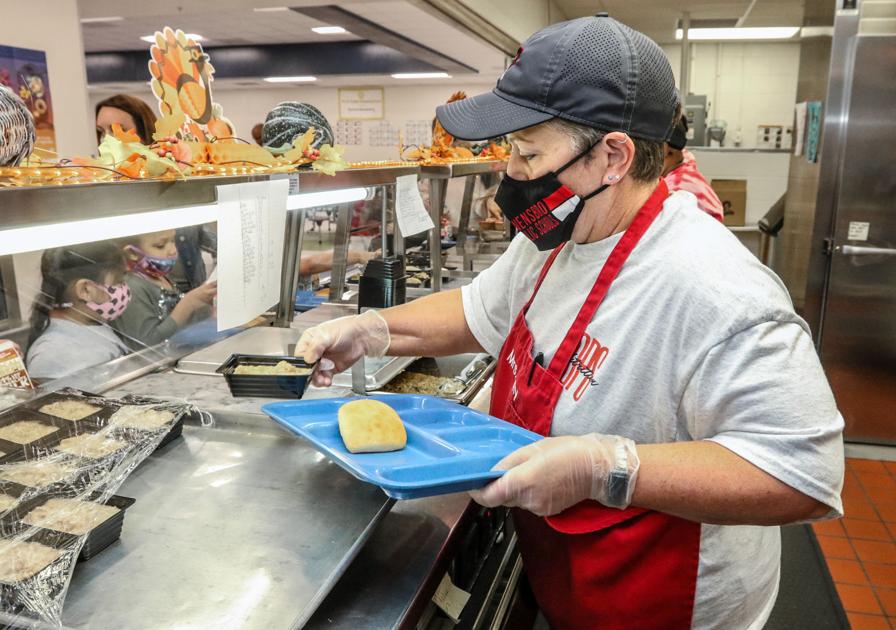In order to fully understand the scope of what has been dubbed the Great Supply Chain Disruption, we need to go back to the beginning of the pandemic.
Countries worldwide quarantined populations and shut down manufacturing and factory operations in an effort to stave off the spread of COVID-19, which created a rippling effect. Companies decreased their worker population, and therefore output of goods and services. Meanwhile, people who were home and out of work due to layoffs or cutbacks, or who were simply working remotely, kept on spending and seeking out products, The New York Times reported in October.
This kink in the supply chain has had a lasting impact on stores in the U.S. Grocery store shelves have been empty, trucks take weeks longer to deliver items and, in most cases, this has resulted in an increase in prices.
Area suppliers are not immune to this.
CRS OneSource General Manager Jeff Hayden reported that last year a semi-tractor load of French fries from the Chicago area cost about $650 to haul to Owensboro. Now that same load costs about $2,360.
School systems have also been impacted by these shortages, specifically in food service. Both Owensboro Public Schools and Daviess County Public Schools are in contract with CRS to receive food items, paper products and beverages.
Kaitlyn Blankendaal, OPS food services director, and Lora Wimsatt, DCPS spokesperson, both say one of their biggest challenges lately has been the shortage of paper products, including items like Styrofoam plates.
Wimsatt said every restaurant in town is using more of these items than usual because so many more customers are using take-out and delivery rather than dine-in options.
Blankendaal said OPS has specifically had issues with finding fresh lettuce and carrots. However, she does feel fortunate.
“A lot of other school districts are in a lot worse shape than we are,” she said, adding that she is thankful for CRS and the hard work they put in to ensure products are continuing to arrive, however “off bid” they may be.
“It may not be our normal product, but we are making substitutions to meet all of our requirements, and we are going to continue to do everything we can to serve delicious meals to our kids,” she said.
Jo Cooper, Muhlenberg County Public Schools food service director, said the school system uses Gordon Food Services as a distributor. She said MCPS is dealing with “lots of shortages.”
“We are going out to local grocery stores in order to feed our students,” she said, adding that as prices continue climbing, budgeting is challenging. “No matter the shortage issues, our students will continue to be provided breakfast and lunch every day.”
Hayden said the supply chain disruption is specifically impacting CRS in two ways: manufacturers are struggling to find labor to produce products, and there aren’t enough trucks on the road to deliver the products quickly enough.
Pre-pandemic, CRS could place an order and have it the next day. Now, that same order could take anywhere from nine to 14 days to be delivered, Hayden said.
The fill rates for orders have also been changing drastically. For the last five years, if CRS placed an order for, say, 100 items, they would receive about 97-99% of those items. Now, the fill rate stands between 40-85%.
Items in shortage vary from week to week. Currently, corn nuggets are scarce. So are jalapeño poppers and to-go containers, Hayden said.
Items he considered in a “critical shortage” are chicken items, which he said are a staple across the U.S. in commercial kitchens.
“It’s not because there’s a shortage of chicken,” he said. “There’s a shortage of labor to process it.”
He considers labor at the manufacturing level a No. 1 concern, seconded by logistical and transportation hiccups.
The U.S. Census Bureau reported this summer that supply chain disruptions are largest in the manufacturing sector, with construction being a close second. Accommodation and food services ranked fifth in domestic supplier delays.
The Great Supply Chain Disruption is very real, and it is here, said Blankendaal, but area food services representatives in schools are working tirelessly with suppliers and distributors to ensure that very little change occurs at the student and family level.
“We are definitely feeling it,” she said. “I don’t want to downplay it, but we have been very fortunate.”
Wimsatt echoed this statement, adding that commodity prices are planned a year advance for school systems. Variance in pricing due to these shortages has been impactful.
“We have seen some price increases, and a few items have been completely discontinued, but our food services team has been very flexible as they work to find creative solutions,” she said.
Hayden said a lot of CRS customers are struggling with the price changes because pricing for high demand items are “sky-rocketing.”
Still, the company is doing its best to absorb as much of that as it can, but “U.S. broadline distributors are really struggling.”
“We can’t eat all the cost,” he said. “Our margins are very thin as it is, as we stay competitive against other companies. Still, the 145 (people) working here are working relentlessly to get product for our customers.”


